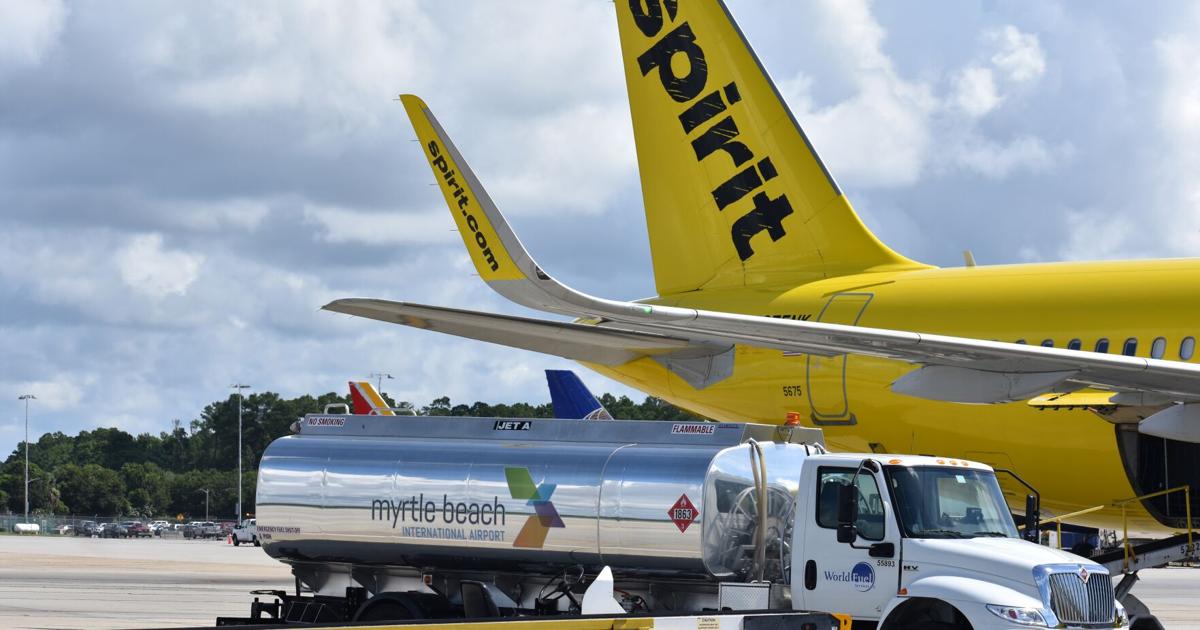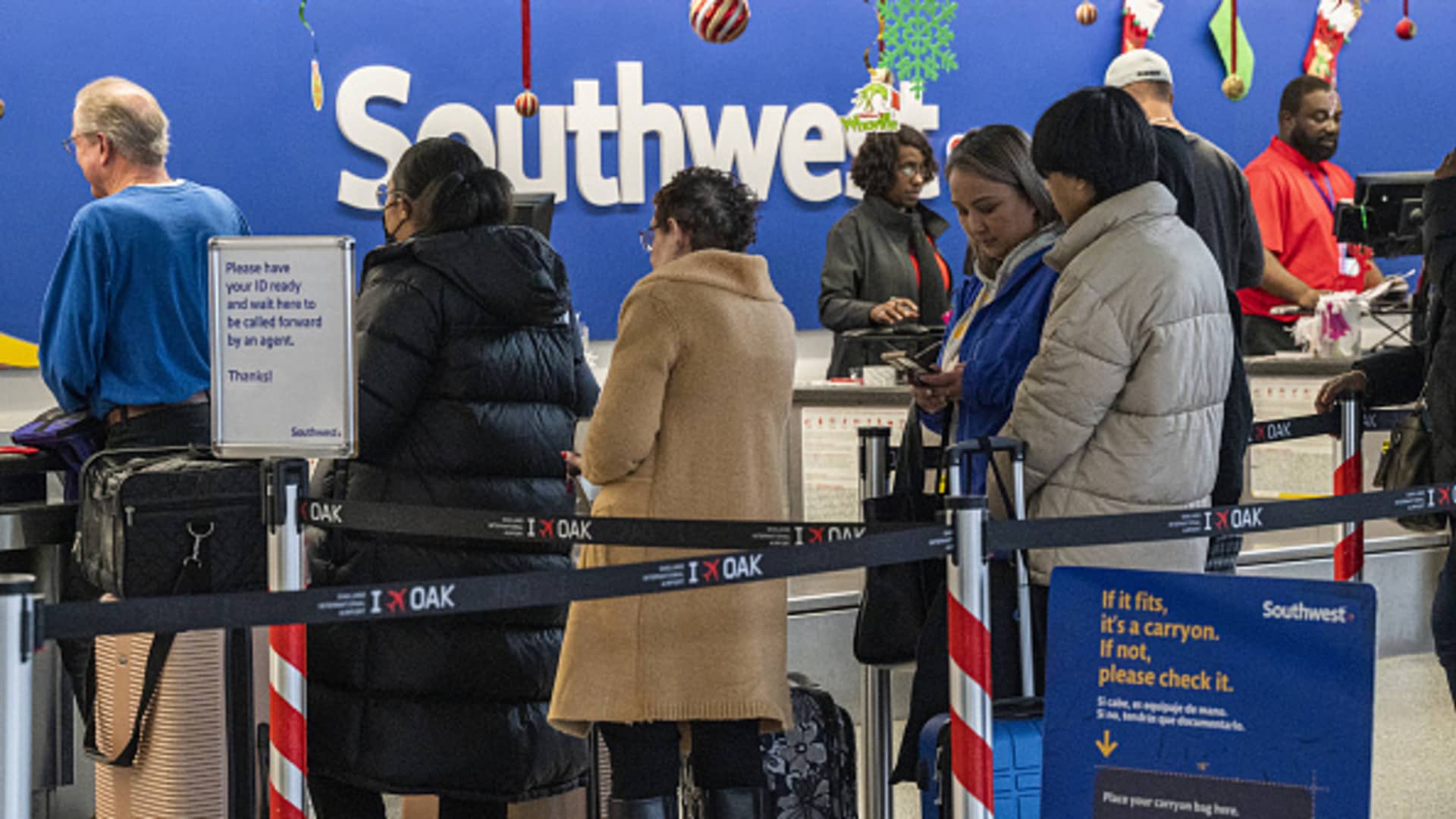NEW YORK — Shares of Spirit Airlines plunged by more than half Nov. 13 after the budget carrier disclosed that it won’t announce quarterly financial results on time while it continues talks with lenders to restructure its debt.
The company said negotiations are progressing toward an agreement that would protect creditors and customers. It added that if such a deal is reached, it would be expected to wipe out existing shareholders.
The stock fell 59 percent Wednesday to close at $1.31.
The low-cost airline, which serves Charleston and Myrtle Beach, has been struggling to recover from the pandemic-caused swoon in travel. A federal judge blocked an attempt to sell the airline to JetBlue after the Justice Department sued on antitrust grounds.
Spirit disclosed after the stock market closed Nov, 12 that it had notified the Securities and Exchange Commission it would be late in filing its third-quarter financial report while it continued discussions with lenders that are to be repaid in 2025 and 2026.
If it can reach a deal, Spirit said, it would go through “a statutory restructuring” that would protect creditors, employees, customers and companies that do business with the airline. The move “is expected to lead to the cancellation of the company’s existing equity.”
The Florida-based airline said it was also “exploring strategic alternatives” — often a euphemism for a sale, merger or restructuring. The Wall Street Journal, citing inidentfied sources, reported late Tuesday that Spirit was discussing terms of a possible bankruptcy filing with its bondholders after merger talks with Frontier Airlines broke down.
The company also gave grim guidance about its third-quarter performance. Spirit said its operating margin would be 12 percentage points worse than last year’s third quarter, when it was a negative 15 percent. Revenue will be down and expenses up compared with a year earlier.
More recently, the company began cutting four of its flights from Charleston International, including a nonstop between the Lowcountry and Las Vegas that was rolled out last year. Its last day was Nov. 6.
A four-day-a-week flight to Detroit, launched in July, and to Boston also have been clipped. And service between CHS and New York City’s LaGuardia Airport will end Dec. 3.
TD Cowen analyst Tom Fitzgerald said the debt-restructuring announcement creates the risk that customers will book seats on other airlines instead, putting even more pressure on Spirit’s liquidity.
The carrier is the nation’s biggest budget airline. It has lost more than $2.5 billion since the start of 2020 and faces looming loan payments totaling more than $1 billion.
Travelers are still flying on Spirit’s bright yellow planes. They’re just not paying as much.
In the first six months of the year, Spirit passengers flew 2 percent more than they did in the same period last year while paying 10 percent less per mile flown. Also, revenue per mile from fares was down nearly 20 percent, contributing to Spirit’s red ink.
It’s not a new trend. Spirit failed to return to profitability when the coronavirus pandemic eased and travel rebounded. There are several reasons behind the slump.
Spirit’s costs, especially for labor, have risen. The biggest U.S. airlines have snagged some of Spirit’s budget-conscious customers by offering their own brand of bare-bones tickets. And fares for U.S. leisure travel — Spirit’s core business — sagged most of this year because of a glut of seats on domestic flights.
Peter McNally, an analyst at investment-research firm Third Bridge, said Spirit used debt to grow aggressively coming out of the pandemic to increase its market share. But its costs rose and pricing power was damaged when other airlines also added flights, he said.
Frontier Airlines tried to merge with Spirit in 2022 but was outbid by JetBlue. The Justice Department sued JetBlue and Spirit, saying a merger would drive up prices for Spirit customers who depend on low fares, and a federal judge agreed in January. JetBlue and Spirit dropped their merger two months later.
Spirit and Frontier, based in Denver, declined to comment on possible merger discussions. Savanthi Syth, an airlines analyst for Raymond James, said she still believes that a merger of the two is likely once Spirit restructures its loans to reduce its costs.
U.S. airline bankruptcies were common in the 1990s and 2000s, as carriers struggled with fierce competition, high labor costs and sudden price spikes for jet fuel. While some survived the turbulence and a wave of mergers, Pan Am, TWA, Northwest, Continental and US Airways all disappeared.
The last bankruptcy by a major U.S. carrier ended when American Airlines emerged from the reorganization process and simultaneously merged with US Airways in December 2013.



